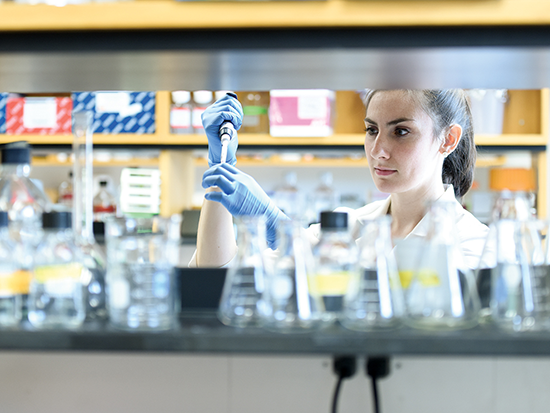 Research funding to UAB from the National Institutes of Health tops $300 million again.For the fourth year in a row, research funding to the University of Alabama at Birmingham from the National Institutes of Health in 2022 exceeded $300 million. The university received $332,830,823, according to the Blue Ridge Institute for Medical Research. That placed UAB 28th in the list of organizations receiving funding from the NIH. Among public universities, UAB ranked 11th.
Research funding to UAB from the National Institutes of Health tops $300 million again.For the fourth year in a row, research funding to the University of Alabama at Birmingham from the National Institutes of Health in 2022 exceeded $300 million. The university received $332,830,823, according to the Blue Ridge Institute for Medical Research. That placed UAB 28th in the list of organizations receiving funding from the NIH. Among public universities, UAB ranked 11th.
Investigators in the UAB Marnix E. Heersink School of Medicine were the recipients of $266 million in NIH funding, good for 26th among the nation’s medical schools.
The School of Optometry ranked fifth among optometry schools, with funding of $4.3 million.
The School of Nursing also ranked fifth, up one spot from last year, with $9.4 million in grant funding.
The School of Dentistry grants totaled $5.2 million, which placed the school 16th in the nation.
The School of Public Health ranked 22nd, with $13.3 million in funding.
Funding totals for the School of Health Professions for 2022 are not yet available. In 2021, the school ranked second among similar schools, with $9.2 million in funding.
“We are honored that NIH has seen fit to provide more than $300 million in research funding to investigators at UAB for four years in a row now,” said Chris Brown, Ph.D., vice president for Research at UAB. “This reaffirms UAB’s place as a leading academic research institution. Investment in research leads to discoveries and achievements that can have a positive, beneficial impact on the health and the lives of citizens locally, regionally, nationally and globally.”
Within the Heersink School of Medicine, four departments were in the top 10 in research funding. The Department of Dermatology was sixth, with $6.3 million. The Department of Cell, Developmental and Integrative Biology was seventh, with $16 million. The Department of Biomedical Engineering landed in 10th place, with $6 million, as did the Department of Surgery, with $14 million.
Another five departments landed in the top 20 in the nation. The Department of Urology was 13th, with $2.2 million. The Department of Microbiology ranked 16th, with $16.7 million, while the Department of Genetics landed at 18th, with $13.2 million. The departments of Pediatrics and of Obstetrics and Gynecology placed at 20th. Pediatrics received $22 million in research funding, while OB/GYN had $4.2 million.
Other departments receiving research funding from the NIH:
- Division of Medicine, with $93.6 million
- Department of Neurology, with $14.1 million
- Department of Pathology, with $13.2 million
- Department of Psychiatry and Behavioral Neurobiology, with $12.2 million
- Department of Neurobiology, with $9.8 million
- Department of Biochemistry and Molecular Genetics, with $5.5 million
- Department of Anesthesiology, with $4.2 million
- Department of Ophthalmology and Visual Sciences, with $3.9 million
- Department of Radiology, with $3.4 million
- Department of Pharmacology and Toxicology, with $2.1 million
- Department of Neurosurgery, with $1.9 million
- Department of Otolaryngology Department of Otolaryngology, with $769,938
- Department of Physical Medicine and Rehabilitation, with $426,042
- Department of Family and Community Medicine, with $133,133
